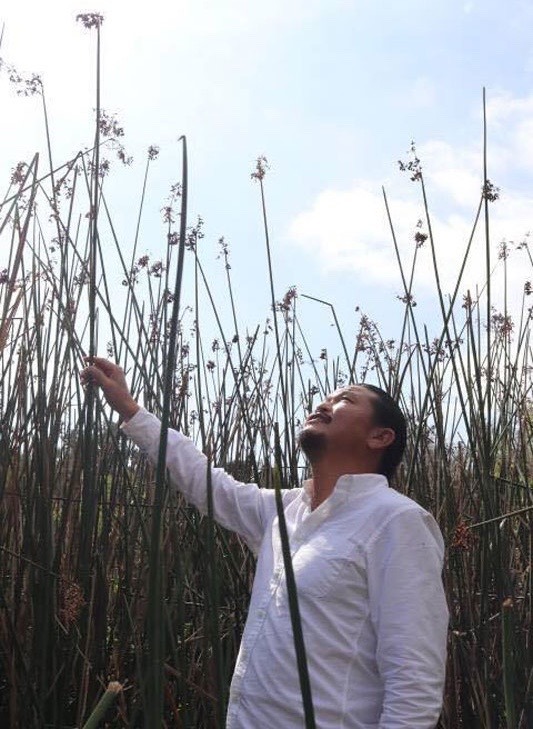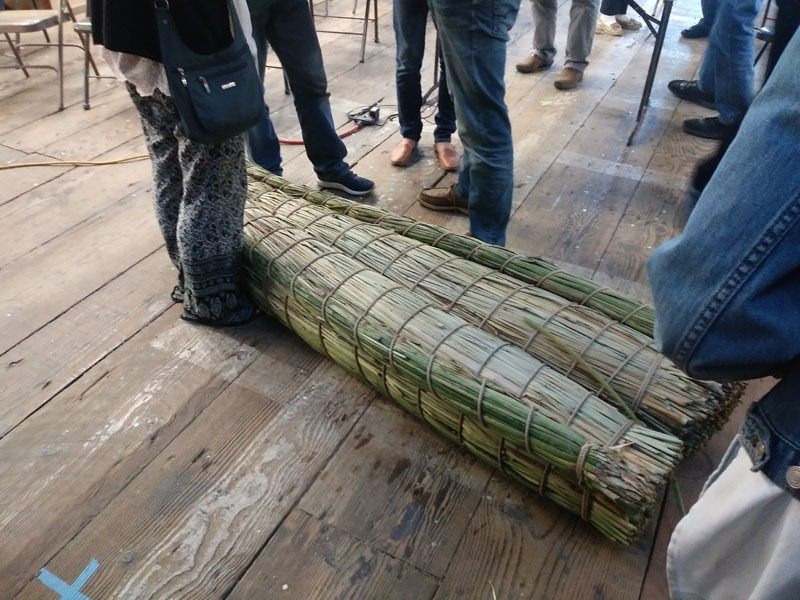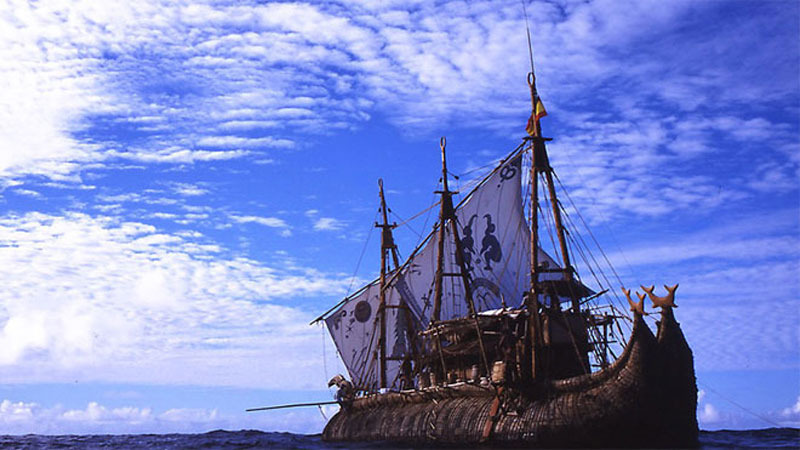
The Reed Boat Expedition
"Reed boat does not take you where you want to go. Reed boat takes you where you should go, accompanied by the nature."

Last night at Spaulding Marine Center, Captain Jin Ishikawa stood in front of about 20 people with a laptop and projector. On the floor in front of him was a tight bundle of reeds woven into a roughly 6-ft boat shape, which he had helped build early that day with the Spaulding summer kids camp.

©2018 Latitude 38 Media, LLC
Ishikawa was sharp and engaging, and the story of his travels — and how he came to be in the Bay Area to build a 60-ft reed boat that will cross the Pacific — was deeply inspiring. Jin described himself as an explorer; as a young man in the late ’80s, he backpacked through North America, Southern India and East Africa. "I went to India, and like every other tourist, it changed my mind. I don’t know why. I suddenly wanted to see the indigenous people of the world. I went to Kenya and Tanzania, wondering, what is the ‘happy life?’ And on the other hand, what is the death? What is the fear of death? I walked on the border of the two."
In 1990-1991, Jin bought two camels and crossed the Sahara by himself, an almost 1,700-mile trip that took six months, where Ishikawa "explored the philosophy of death or life." After the "hot place," Jin wanted to explore a "cold place," and ended up living with the Inuit in Point Barrow on the northernmost tip of Alaska, where he joined in the building of an umiak, a type of open skin boat. After the hot and cold place, Ishikawa went to the Colombian jungle and traveled some 500 miles on the Orinoco River in a dugout canoe. In 1995, he went to "the high place" in Lake Titicaca, where he first encountered the reed boat. "I always travel by local means. In the ‘high place,’ I first planned to use a burro; I even had a poncho. But when I saw the reed boat, it changed my mind."
In 1998-99, Ishikawa was part of a team of 10 people from seven countries who built a 100-ft reed boat in Alica, Chile. The crew "sailed" to the Marquesas over 88 days and almost 5000 miles. While the reed boats have sails, they travel in a type of controlled drift — not unlike Thor Heyerdahl’s Kon Tiki expedition. When asked about Heyerdahl last night, Ishikawa said "Ah, Thor. He is the master. He is my Yoda, my Obi Wan Kenobi."

Jin would go on to build two more large, bluewater reed boats. In 2002, he built a vessel in Barcelona and voyaged to the Cape Verde Islands over 60 days and 1800 miles. In 2005, he built a reed "ship" in Japan and traveled east to the Izu Islands over 13 days and 600 miles.

Ishikawa’s current boat will be built with reeds harvested from Rush Ranch in Suisun City, and the boat will be built near the Delta. Renowned yacht designer Jim Antrim has contributed some blueprints to the project. "I was always sort of interested in reed boats," Antrim told us. "My dad was out in California and read about reed boats; we watched a replica of a canoe that the Indians used being built."
We will be reporting on this project as it comes together over the next year. If you’re interested in finding out more, or making a donation, go to Jin’s website at www.jinishikawa.com.
"The journey, in which you don’t know where you go, seems reckless. But the journey is reminiscent of the feeling to entrust yourself to nature."

Jin came to me and wanted to do a indigenous collaboration. He can to my tribe where we have a Tule boat race once a year with local native tribes. That was three years ago . Two weeks we harvested our first bundle. All native California Tules. Will be going with him and work with him on harvesting Tule from local Northern California tribes for the good medicine they will give us for this journey and to bring as many native tribes on this historic indigenous collaboration. I feel honored to be a part of this.